Please scroll down for English version.
Die Sonne ist nicht mehr zu sehen an diesem Abend, der Frühling ließ sich aber tagsüber bereits erahnen. Insofern kein unpassender Ort für die Frühlingsstimmung, die in der Luft liegt: Der Typostammtisch ist wieder einmal zu Gast im Sonnenstudio. Gastgeberin und Typostammtisch-Teammitglied Sol Matas ist jüngst von einer Indienreise zurückgekommen und hat entsprechend aufgefahren; indische Snacks werden zu den Getränken gereicht. Der Hingucker sind Sols kunstfertig mit Henna bemalte Hände, auf denen sich sogar das Kürzel TST findet. Welch Hingabe zum Typostammtisch – man ist verzückt …
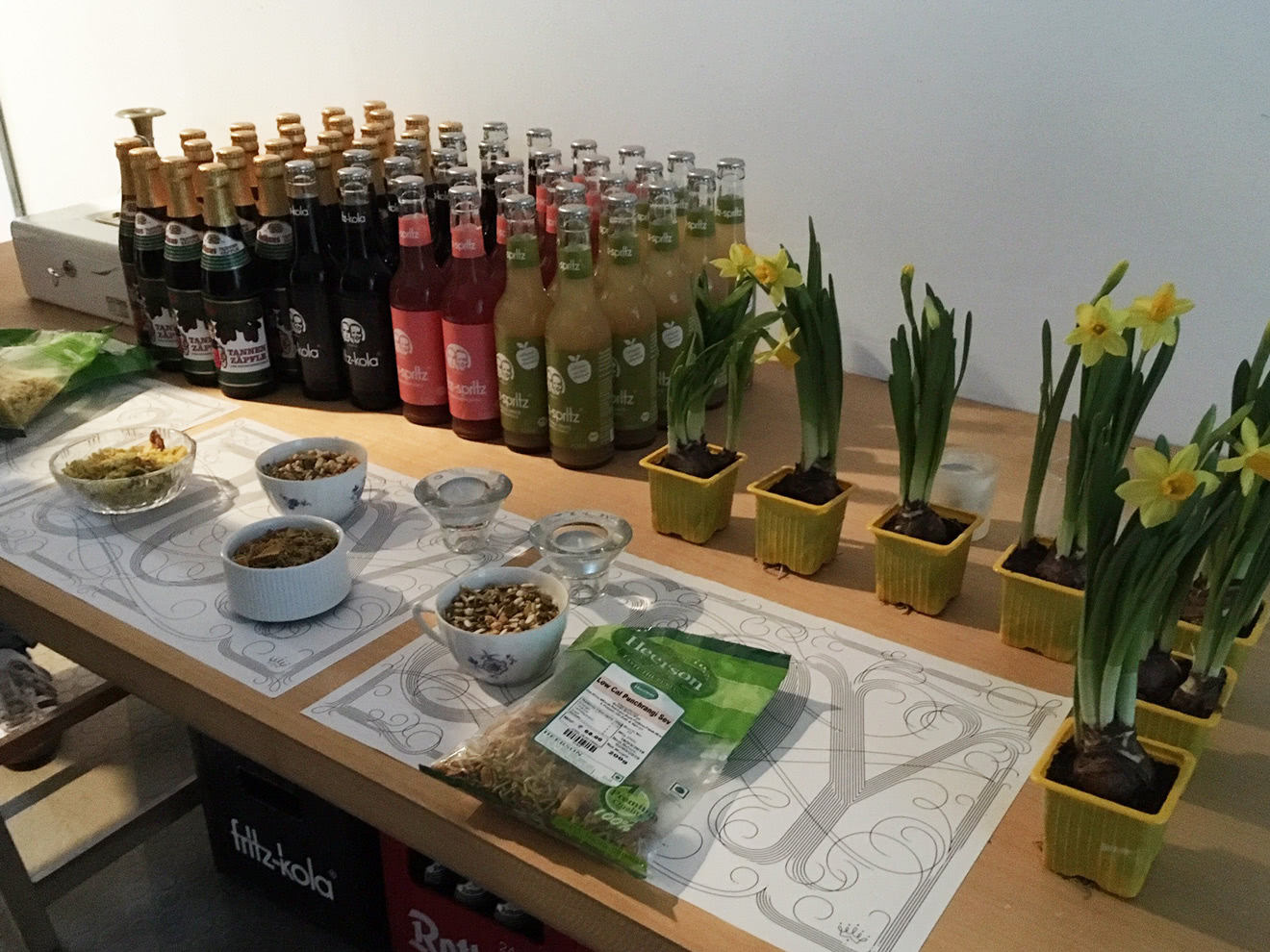
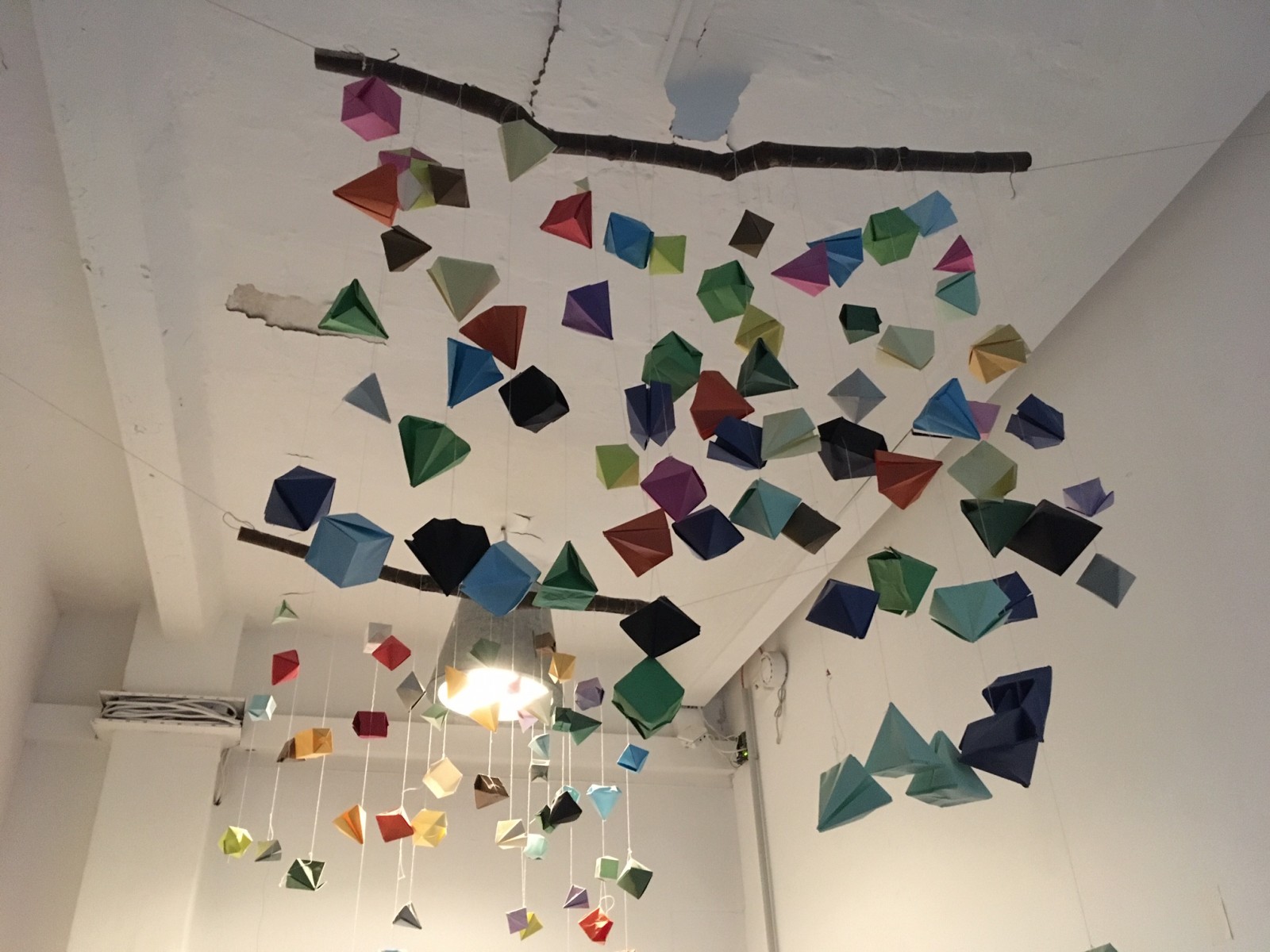
Frühlingsambiente im Sonnenstudio
Spring vibes in the Sonnenstudio
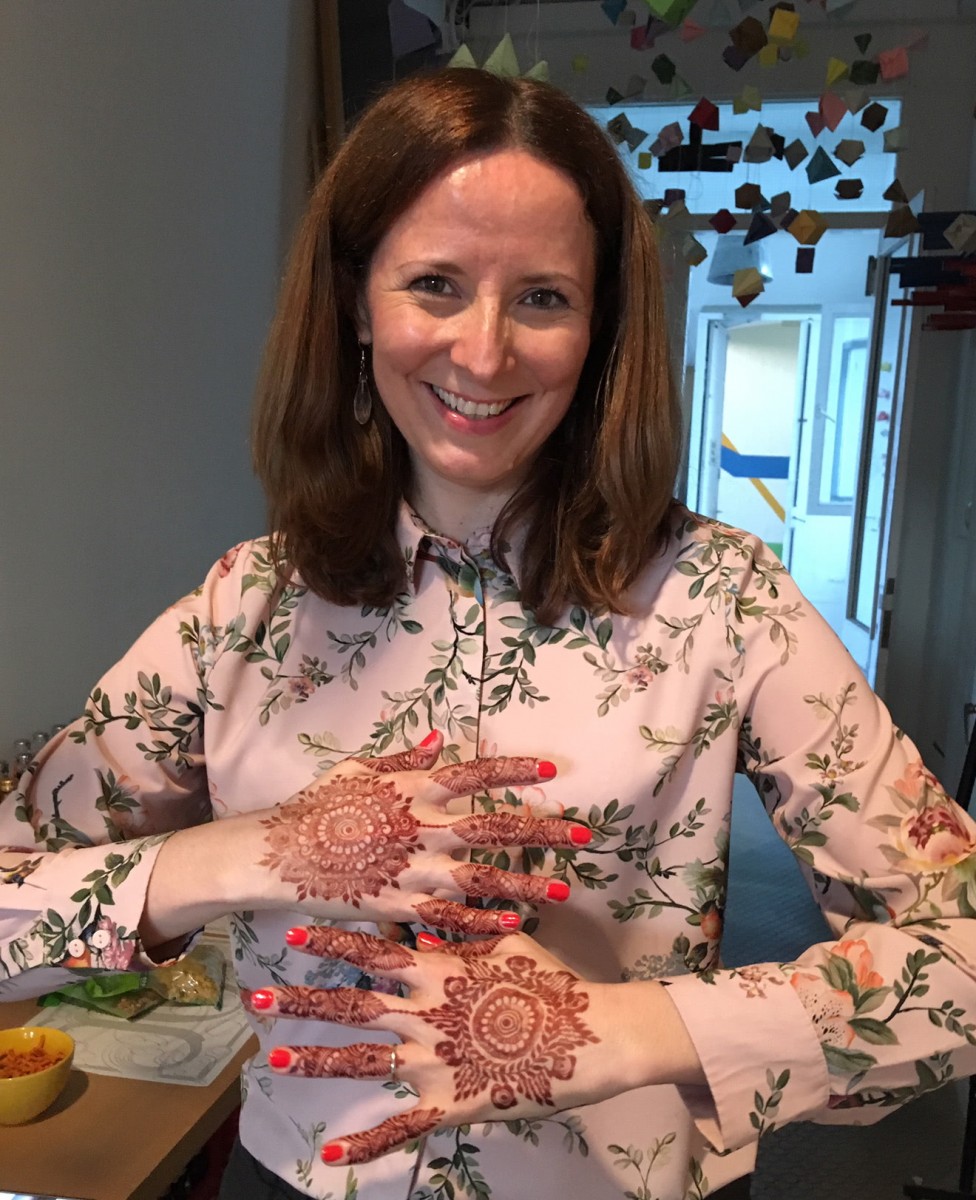 2 Handrücken + 1 Handfläche = 45 min Stillsitzen
2 Handrücken + 1 Handfläche = 45 min Stillsitzen
2 backs of the hand + 1 palm = 45 min of sitting still
Im Vorfeld des heutigen Vortrags kommt es neben dem üblichen „Hallo“ zu spontanen Buchvorstellungen (Ulrike Rausch zeigt ein frisch gedrucktes Exemplar von Making Fonts). Man sichtet zudem seltene Gäste (Toshi Omagari ist aus London angereist) und bekommt den Eindruck, dass es ziemlich schnell ziemlich voll wird. Schön!
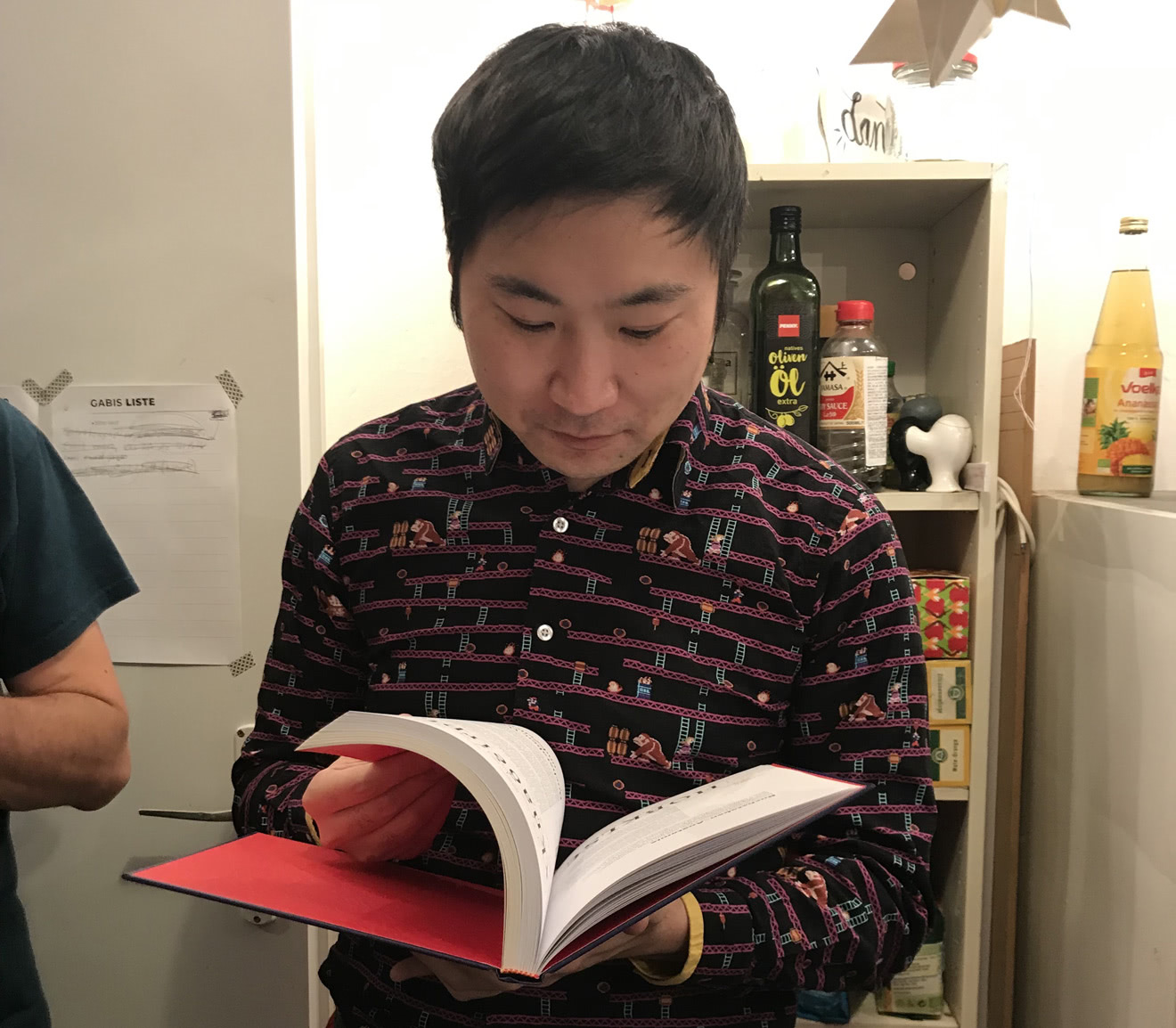 Toshi Omagari, thematisch passend gekleidet, bestaunt das neue Buch von Ulrike Rausch und Chris Campe.
Toshi Omagari, thematisch passend gekleidet, bestaunt das neue Buch von Ulrike Rausch und Chris Campe.
Toshi Omagari, sporting appropriate attire, marvels at the new book by Ulrike Rausch and Chris Campe.
Dann – das Licht geht aus. Stefan Pabst begrüßt die rund 60 Gäste und stellt unsere heutige Vortragende Nadezda Kuzmina vor. Nadezda studiert Interface Design an der FH Potsdam und ist momentan Werkstudentin bei LucasFonts. Sie programmierte gemeinsam mit ihrem Ehemann das Computerspiel Mogee auf 64 x 64 Pixel. Dafür musste natürlich eine passende Schrift gefunden werden und nach erfolgloser Suche entschied sie sich, selbst eine Pixelschrift zu gestalten. Das Resultat heißt wie das Spiel Mogee, ist mittlerweile gut für Latin und Cyrillic ausgebaut und frei auf GitHub verfügbar.
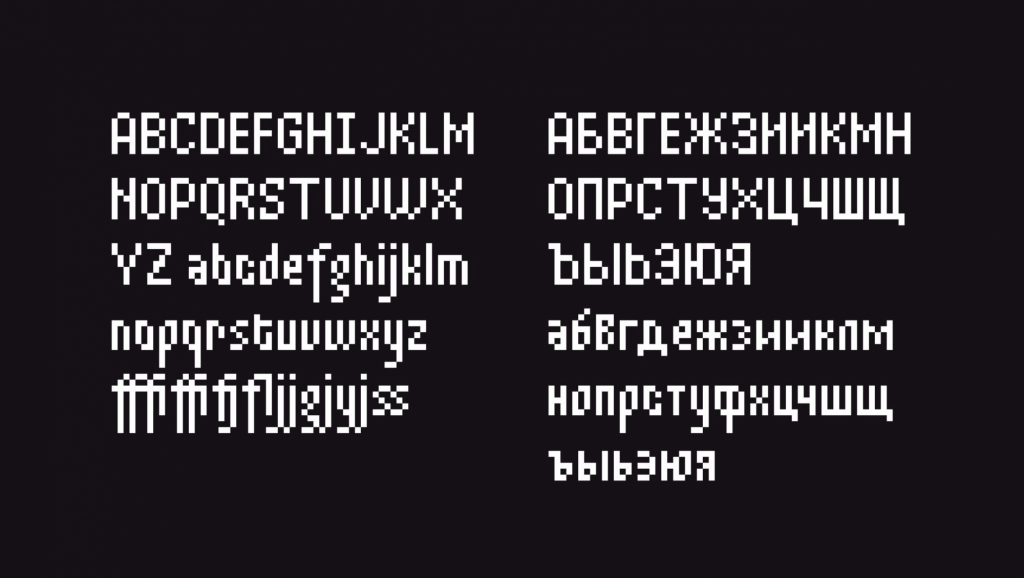 Mogee, Slide aus Nadezdas Vortrag
Mogee, Slide aus Nadezdas Vortrag
Mogee, Slide taken from Nadezda’s presentation
Neben diesem persönlichen Einstieg gibt Nadezda einen interessanten Einblick in die visuellen und technischen Herausforderungen des Themas Schriften in Videospielen. Sie zeigt Beispiele quer durch alle Entstehungszeiten und Genres und analysiert deren Umgang mit Schrift hinsichtlich der Ästhetik und der technischen Umsetzung: Minecraft, Pac-Man, The Legend of Zelda, Team Fortress, Alien: Isolation, Red Dead Redemption, Diablo und Final Fantasy … Außerdem gibt Nadezda einen Überblick über verschiedene Rendering-Technologien und deren Urheber.
Zum Schluss zeigt sie ihr persönliches Lieblingsspiel im Hinblick auf den Umgang mit Schrift: VIB Ribbon, ein PlayStation-Spiel aus dem Jahr 2000. In einer sehr einfachen, humorvollen und monolinearen Schwarz-Weiß-Ästhetik steuert man einen singenden Hasen durch das Spiel. Es ist ein thematischer und optischer Kontrast zu den anderen gezeigten Spielen und unterstreicht die enorm vielfältige Auswahl, die Nadezda getroffen hat, um ihren Zuschauern einen kurzen Einblick in eine andere Welt zu geben.
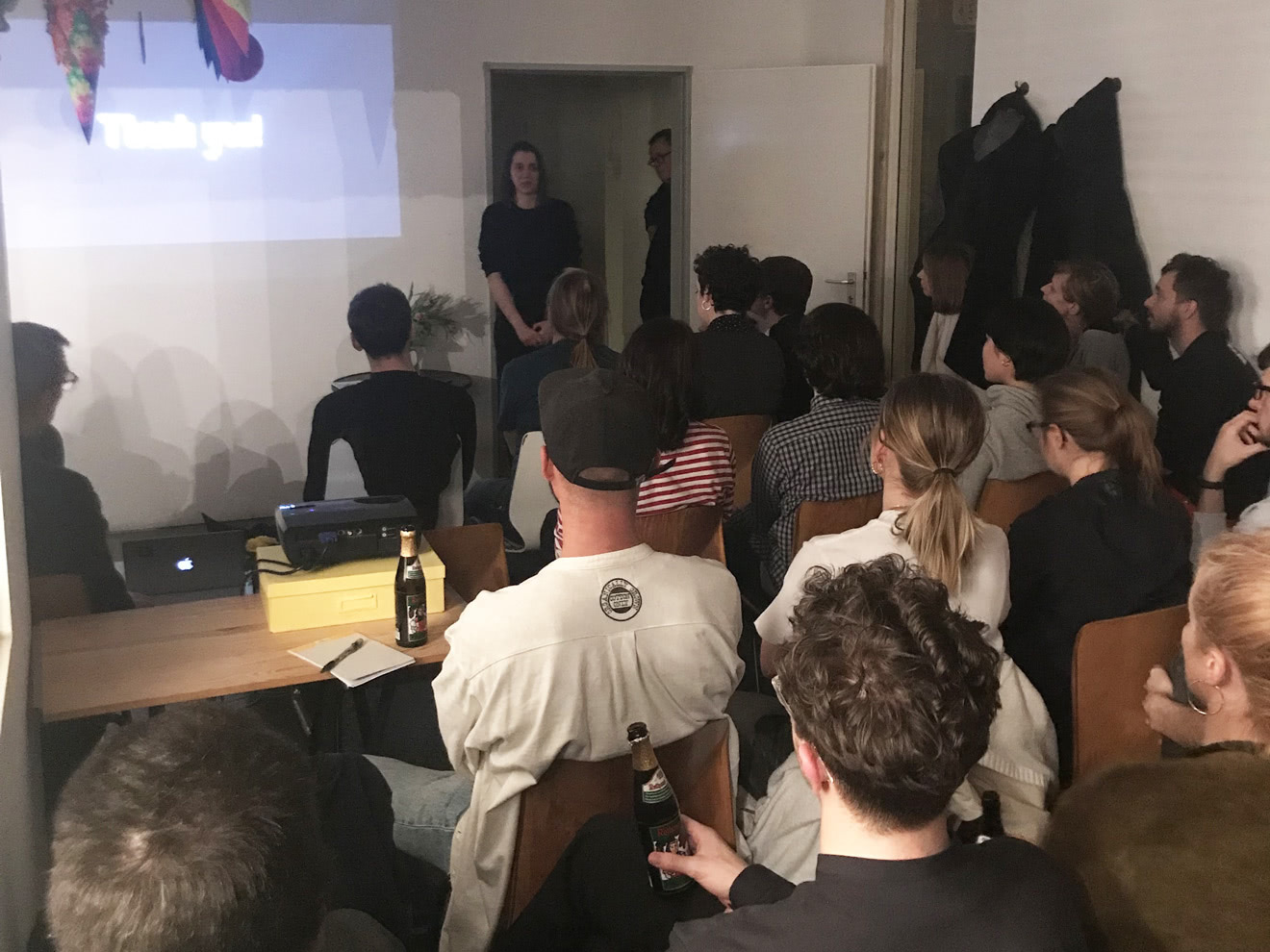 Das Sonnenstudio ist voll.
Das Sonnenstudio ist voll.
The Sonnenstudio is crowded.
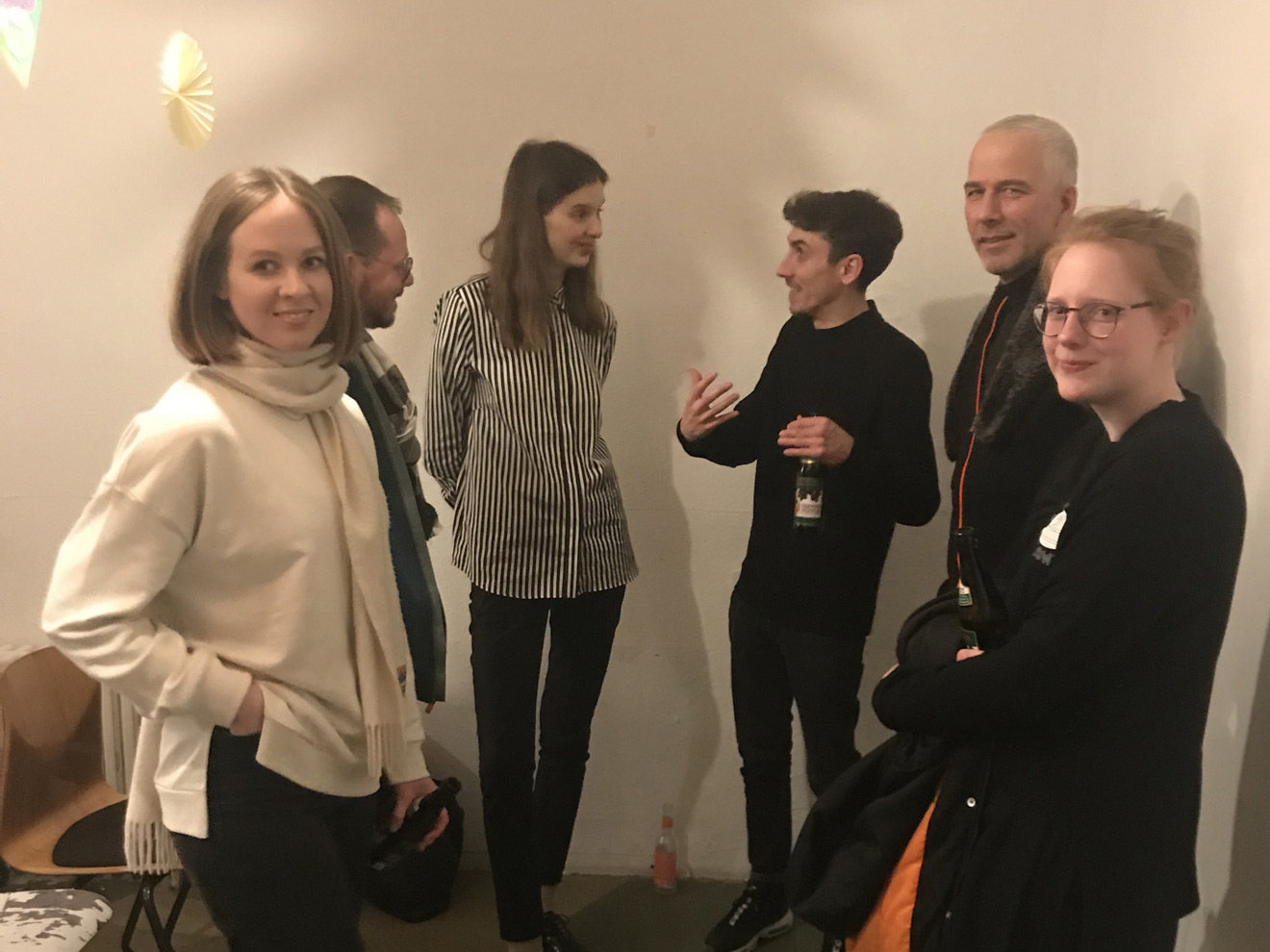
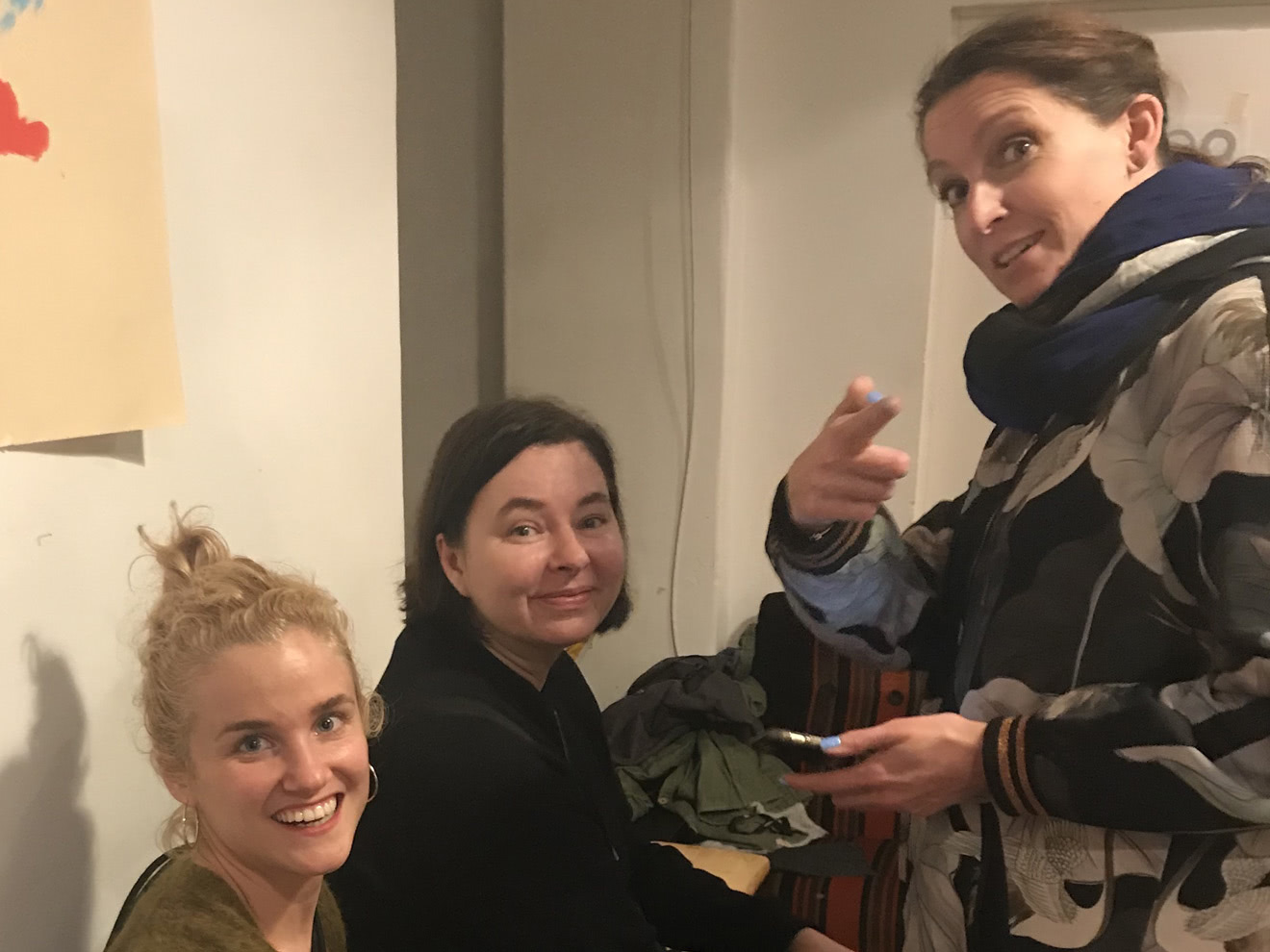 Gespräche und Getränke nach dem Vortrag
Gespräche und Getränke nach dem Vortrag
Conversations and drinks after the lecture
Beifall. Bevor das Licht wieder angeht, ruft Stefan Pabst noch zur Mithilfe beim Renovieren des Buchstabenmuseums auf. Der Vortrag beschwingt, man ist in dieser anderen Welt gefangen und fragt sich, wie viele Besucher heute wohl von Pac-Man oder im Format 64 x 64 Pixel träumen werden …
Game over.
Play again!
///
The sun had already left for the evening, but spring felt close by all day. So it’s not an unsuitable place with the spring atmosphere already in the air: the Typostammtisch is once again taking place in the Sonnenstudio. Hostess and Typostammtisch team member Sol Matas has recently returned from a trip to India and prepared accordingly: Indian snacks are served with the drinks. The eye-catchers are Sol’s skillfully henna-painted hands, which even have the abbreviation TST on them. What devotion to the Typostammtisch!
Leading up to the lecture, the usual “hello” is followed by spontaneous book presentations (Ulrike Rausch presents a copy of Making Fonts hot off the press). Rare guests are also to be seen (Toshi Omagari has arrived from London) and it’s getting crowded pretty quickly. Great!
Then the lights go out. Stefan Pabst welcomes the approx. 60 guests and introduces today’s speaker Nadezda Kuzmina. Nadezda studies Interface Design at the FH Potsdam and is currently working at LucasFonts. Together with her husband she programmed the computer game Mogee on 64 x 64 pixels. Of course, a suitable font had to be found. After searching in vain, she decided to create her own pixel font. The result, called Mogee like the game, is now well developed for Latin and Cyrillic and freely available on GitHub.
In addition to this personal introduction, Nadezda gives an interesting insight into the visual and technical challenges of type in video games. She shows examples across all genres and times of origin and analyses their handling of type in regards to aesthetics and technical implementation: Minecraft, Pac-Man, The Legend of Zelda, Team Fortress, Alien: Isolation, Red Dead Redemption, Diablo and Final Fantasy, among others. In addition, Nadezda gives an overview of various rendering technologies and their creators.
Finally, she shows her personal favourite in regards to the handling of type: VIB Ribbon, a PlayStation game from the year 2000. In a very simple, humorous and monoline black and white aesthetic, one steers a singing rabbit through the game. It is a thematic and visual contrast to the other games which are shown and underlines the enormously varied selection Nadezda has made to give her viewers a brief insight into another world.
Applause. Before the lights go on again, Stefan Pabst calls for help renovating the Buchstabenmuseum. The lecture is lively, one is entranced by this other world and wonders how many visitors will probably dream of Pac-Man or in 64 x 64 pixel format tonight …
Game over.
Play again!